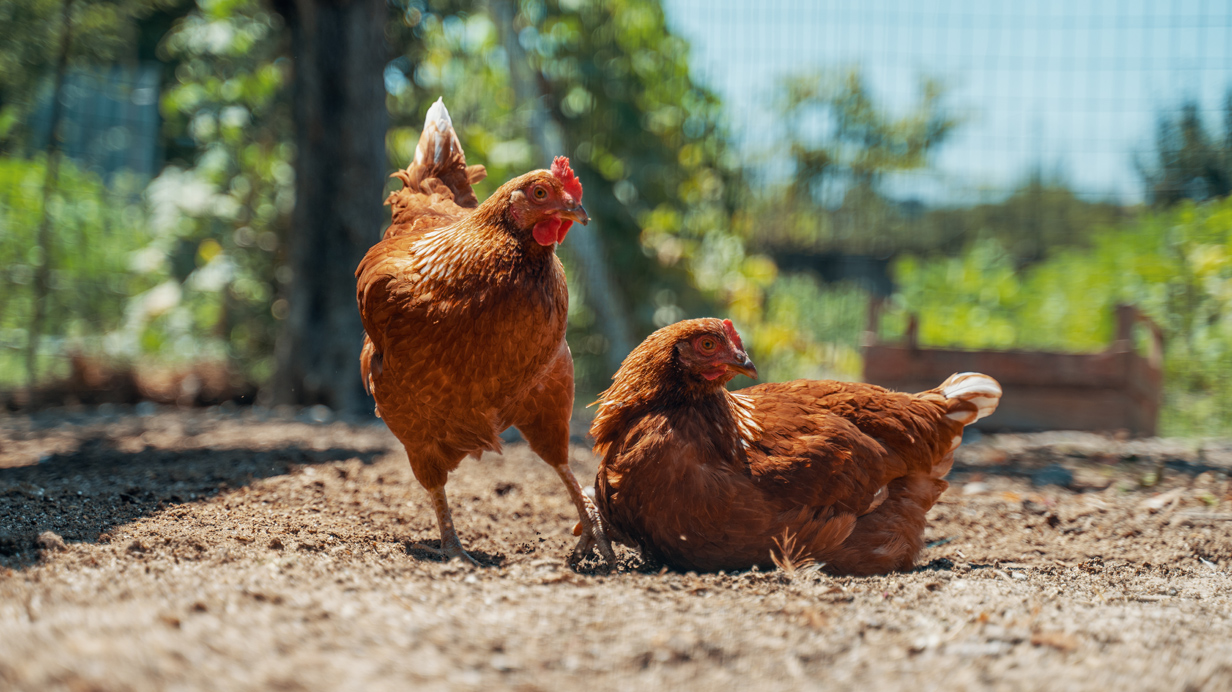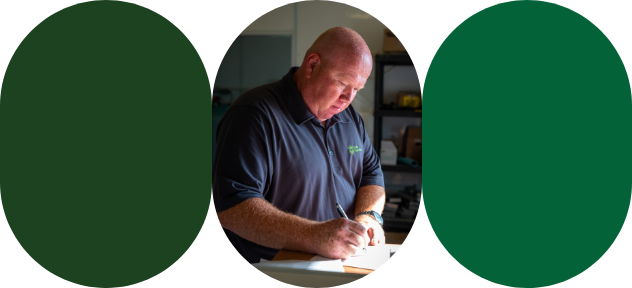Urban chicken management
The key to healthy birds is good management. Here are the best practices for managing your urban chickens.
Henhouse
A good henhouse should protect poultry from the weather (wind, rain), predators, wild animals, and pets.
If the birds do not have access to the outdoors, you should plan for at least one square foot of space per bird. The higher the slaughter weight, the larger the area should be.
If your yard is fenced and has shaded areas, you can give your birds access to the outdoors. However, you will have to wait until they are fully feathered.
Minimum equipment required for 100 birds:
One safe heat source (incandescent lamp)
Two automatic waterers (bell waterers or other)
Two feeders
One minimum–maximum thermometer
For chick rearing (in addition to the above):
One cardboard chick guard (in roll)
Two additional waterers (upside down pots)
Four cardboard feeders
For poult rearing (in addition to the above):
One cardboard poult guard (in roll)
Two additional round feeders (dishes or egg trays)
Four additional waterers (upside down pots)
Other recommended equipment:
One or two windows that open
One small (12 in.) wall-mounted fan
One ceiling light with automatic timer
For layers:
One source of stock water to give drugs to the birds.
Bedding
Use only clean, dry, absorbent, mould-free litter. Soft wood shavings and chopped straw are ideal. Birds can develop leg disorders if they are placed on slippery material such as waxed or scrap paper or bedding containing large pieces of corn cob.
Start with 5 to 10 cm (2 to 4 in.) of bedding. To maintain high-quality bedding, simply add new litter as needed, periodically move feeders and waterers, and remove soiled litter.
After each flock, you will need to:
Remove the old bedding completely to reduce the risk of disease
Dust
Wash the henhouse thoroughly
Spray disinfectant (optional)
Heat sources for chicks and poults
Gas or electric brooders and heat lamps are frequently used as heat sources for chicks and poults.
Start the brooder at least 24 hours before the birds arrive to get the henhouse to room temperature. Bedding should be warm and dry.
When birds are one day old, aim for a temperature of 31–35 °C (90–95 °F) under the brooder at bird level (5 cm or 2 in. from the floor).
Then, reduce the temperature by 2 to 3 °C (5 °F) per week until a heat source is no longer required.
When the birds are six weeks old, a temperature of 20 °C (68 °F) is adequate.
How to set up the heat source in your henhouse
During the critical first seven to 10 days, confine the birds to the area near the heat source, water, and feed. Use 45 cm (18 in.) of high cardboard to create a circle 1 to 2 m (3 to 6 ft.) wider than the brooder or heat lamp area.
If your birds tend to huddle in certain places, it means that they are uncomfortable. Check the temperature and brooder and inspect the space for drafts.
Feed and water
Fill the pots with water two to three hours before the birds arrive.
For the first two to three days, place small amounts of Natur-aile feed on a piece of cardboard on the ground for them. Remove the cardboard feeders as soon as your birds start to feed easily from the feeders.
During the first week, keep the feeders full and put fresh feed in them every day.
In the beginning, one pot of water is enough for about 50 birds, in addition to two automatic (bell) waterers per 100 birds.
The following are recommendations for obtaining good results with broilers and roasters:
The following are recommendations for floor space, feeders, and waterers for broiler turkeys:
After three weeks, to avoid wasting feed and water, regularly raise feeders and waterers to the height of the birds’ mid-back.
Make sure that the birds empty their feeders once a day. Clean the feeders regularly. Store your feed in a cool, dry place.
Periodically change the location of equipment to keep the bedding in good condition. Clean waterers daily and avoid dumping cleaning water on the bedding.
Ventilation
Adequate ventilation provides the necessary oxygen for the birds and helps to remove dust, moisture, and toxic gases generated by the birds and their bedding.
So be sure to maintain a minimum supply of fresh air while ensuring that the temperature is appropriate for the birds’ age. Make sure that there are no drafts.
Lighting
Continuous lighting (24 hours a day) is best for the first day, after which at least 16 hours of light per day and at least four hours of complete darkness are required.
When the birds are 21 days old, light from 20-watt bulbs will be sufficient. Gradually replace 60-watt bulbs. Reducing light intensity will help reduce bird activity, cannibalism, and bruising.
Clean the bulbs weekly to maintain adequate light intensity.


